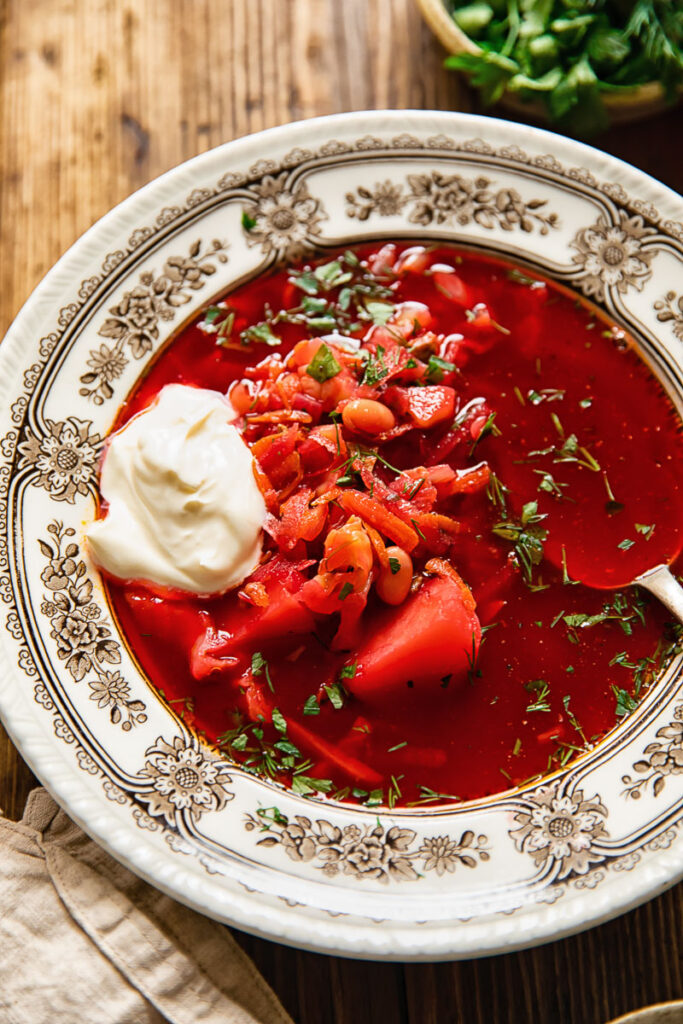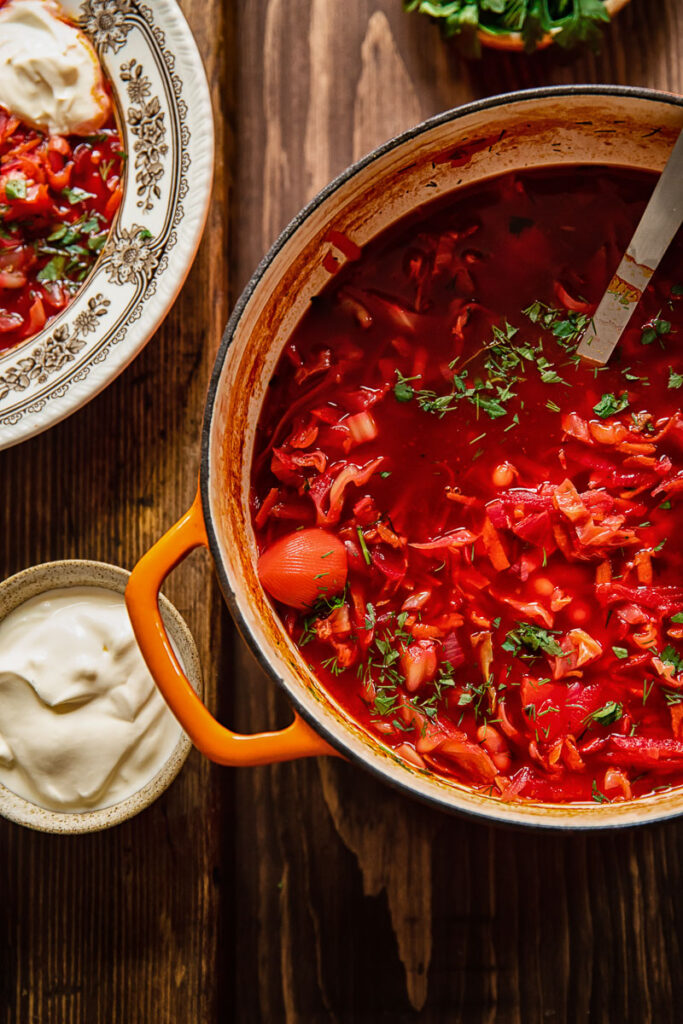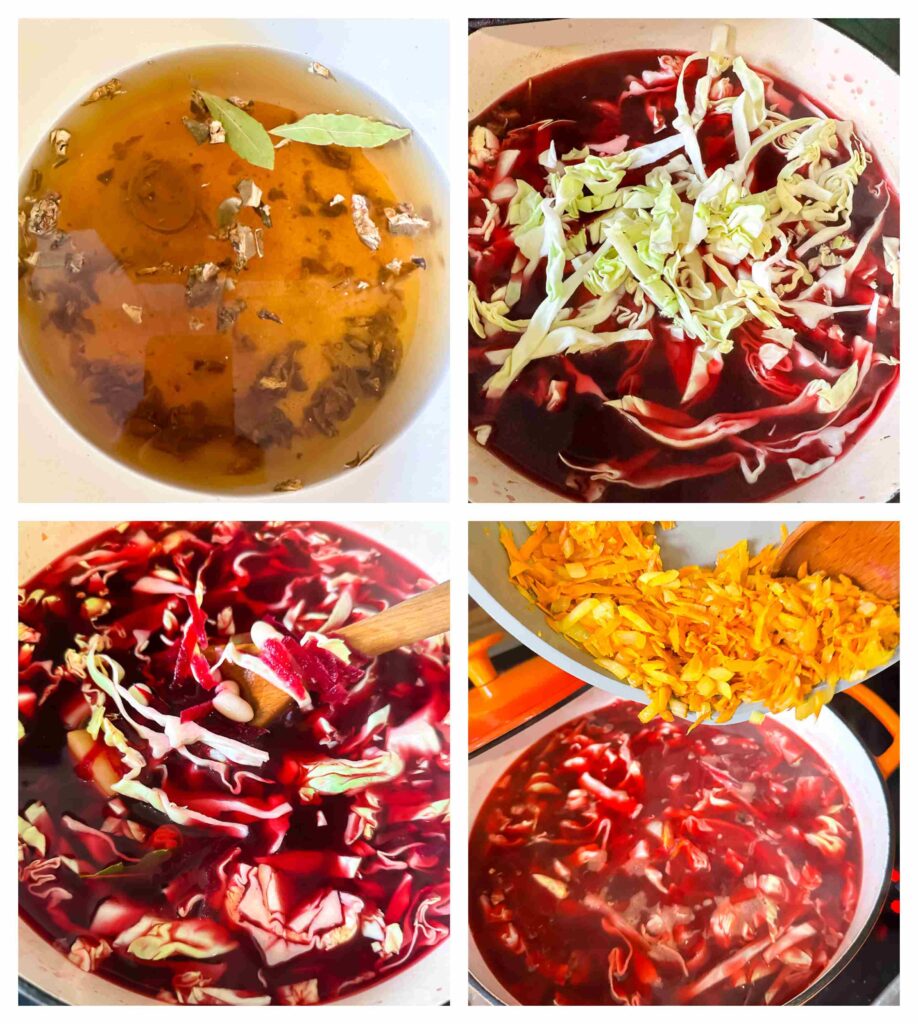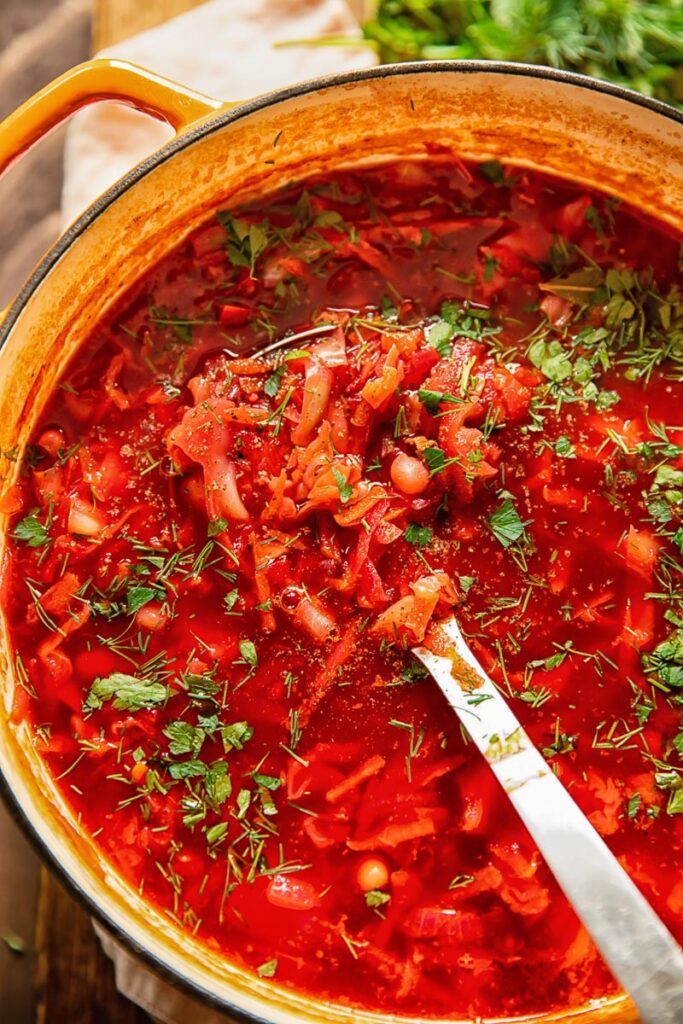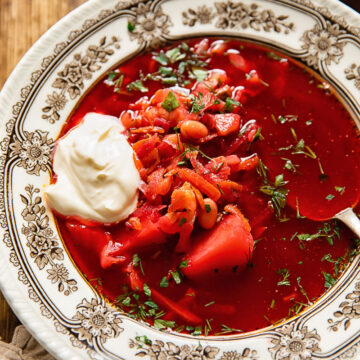Serve with a thick hunk of my rye bread to dunk and then mop the bowl clean. The literal translation of borscht is ‘cow parsnip’ or ‘hogweed’. It’s no wonder it has never been anglicised as it makes this incredibly intense tasting soup sound far less appetizing. Although these were the key ingredients of early borscht, you can rest assured you’ll find no weeds in this recipe! As a family of vegetable-lovers, and with roots from the same far off soil, you can rightly imagine that this is a favourite. Nowadays, considered a ‘celebration’ soup, vivid bowlfuls will be found on the table at Christmas Eve and Easter in my house.
What is borscht?
Borscht comes from humble beginnings. Originating from what is now Ukraine, it was a food for the rural poor. Since then borscht has taken an evolutionary journey. It’s changed colours and ingredients, and delighted diners the world over. At first borscht didn’t even contain beetroot and was considered ‘peasant’ food. Consisting of roots, shoots, flowers – stems and all – whatever was growing nearby went in the pot. Then, it was probably a clear or greenish, slightly meaty broth that was quite sour in flavour due to fermentation. And reputedly good for the medieval hangover! Over the centuries it picked up ingredients and found it’s way onto the feast tables of nobility. Eventually leaving Europe and satisfying folk as far flung as the U.S. These days, borscht is instantly recognisable by it’s red hues, still sour, but grounded and earthy flavour and its trademark dollop of sour cream. Variations do exist though. Check out my green borscht for a lovely summer soup, with no beets in sight!
Key ingredients
At the root of any borscht are, yes, roots; beetroot, potato, carrot, and onion. Cabbage is the only non-root recipe must. Other classic ingredients are a little meat; beef or chicken, and stock. But don’t be afraid to go vegetarian, or vegan, like my version. Mushrooms, tomatoes and herbs can also be added depending on what you like and what you want using up. The colour of the borscht will be dictated by your root selection and mix ratio. As well as trademark red, this sour soup can be green or white. And, interestingly, depending on the religious event a different colour is served.
Serving suggestions
Traditionally, borscht was served as a first course to be followed by meat and potatoes or some other main. Things are different now, and borscht is often seen as a meal all on its own. You’ll almost always see borscht served with a dollop of sour cream and a healthy sprinkling of fresh herbs such as dill and parsley. I also add a few slices of sourdough or some other lovely fresh bread with a smear of butter.
Storage and leftovers
Without the sour cream, any leftovers can be covered tightly and kept in the fridge for 2-3 days. There is even an argument that borscht tastes better the next day after all the flavours have mixed and melded together. Although you can freeze it, bear in mind potatoes don’t love being frozen and then defrosted. So I don’t recommend it!
More vegetarian soup recipes
Harvest Minestrone Soup Curried Cauliflower and Cheese Soup Cream of Broccoli Soup with Smoked Gouda Roasted Butternut Squash and Sweet Potato Soup Spring Minestrone Soup
